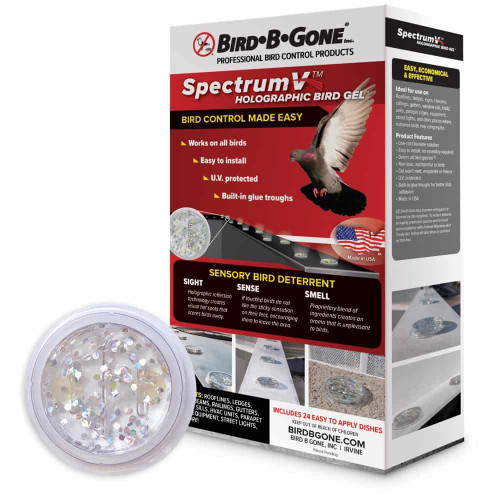Bird Control for Awnings
How to Keep Birds Out of Awnings
Learn how to keep birds away from awnings with effective bird control. Discover what methods are most effective for nesting and non-nesting birds. Awnings and other covered spaces provide ample protection from weather and predators. Birds seek covered areas such as awnings to take refuge to build their nests. For this reason, it is important to install effective bird deterrents for awnings.
Find What Bird Deterrent Solution For Awnings Best Fits Your Problem
The solution you choose to solve your bird problem will depend on the bird activity. Nesting and non-nesting birds require different methods to effectively solve your bird problem.
- Nesting Birds in Awnings
- Non-Nesting Birds in Awning
The most effective way to stop birds from nesting under awnings is to install exclusionary bird control products such as bird netting. If birds are not nesting, alternative bird deterrent products can be used to keep birds out of awnings
Note: It is important to clean away nesting materials and droppings thoroughly before installation of products.
Stop Birds From Nesting In Awnings:
Contrary to popular belief bird spikes are not the solution to birds nesting in awnings. Bird netting will fully protect the awning from nesting birds and birds who are using cross beams and supports as perches. Netting is the most effective solution for birds in awning, it is the recommended solution for residential and commercial awnings.
3/4" BIRD NETTING (RECOMMENDED)
- 3/4" Mesh size excludes birds completely from accessing the underside of the awning
- Netting stops birds from nesting and perching in awnings
- Professional installation is recommended
SWALLOW SHIELD - SWALLOW AND BAT DETERRENT
- Specifically designed to stop Swallows and Bats from Nesting
- Made from clear plastic and clear mono-filament lines
- Installs easily with self-adhering adhesive strip
- Skill Level: DIY Friendly
For Birds Perching, Roosting, And Sitting Under Awnings: (Non-Nesting)
If the birds are simply perching under the awning, with no signs of nesting, alternative products can be used. We’ve listed some of these products to make things a little easier to choose from. Bird B Gone carries products specifically designed to prevent perching, roosting, and sitting birds.
BIRD SPIKES
- Specifically designed to stop Swallows and Bats from Nesting
- Stops pigeons and seagull sized birds from perching under awnings
- Not for small birds
- Available in stainless steel and plastic bird spikes
SPECTRUMV HOLOGRAPHIC GEL DISHES
- Proprietary blend of gel stops all bird sizes from perching under awnings
- Gel dishes are easy to install with adhesive
- Not for small birds
- Use only on horizontal flat surfaces
AVIAN BLOCK POUCHES
- Bird repellent aromatic pouches repel birds by irritating their senses using grape seed extract
- Gel dishes are easy to install with adhesive
- Works on a range of bird species
- Easy to use pouches can be hung anywhere
A Bird Case Study:
One well-known example of bird-related damage to awnings occurred at a shopping center in New Jersey. The shopping center's awnings were frequently used by pigeons for nesting, causing significant damage and creating unsanitary conditions. The center had to spend thousands of dollars on repairs and cleaning, resulting in lost revenue and a negative impact on the customer experience.
Professional Bird Control Recommendations
Bird B Gone offers a range of bird deterrent products, including bird spikes, bird netting, bird wire, and sonic bird deterrents. All of these products are designed to keep birds away from awnings without harming them. In addition, Bird B Gone offers expert consultation services to help businesses identify the root cause of their bird problems and develop a comprehensive bird control plan.
If you are unsure of which products to use for your awnings, please give our Bird Control Experts a call at 1-800-392-6915. Our team of experts are ready to identify the problem and help find the best possible solution for your awning.







